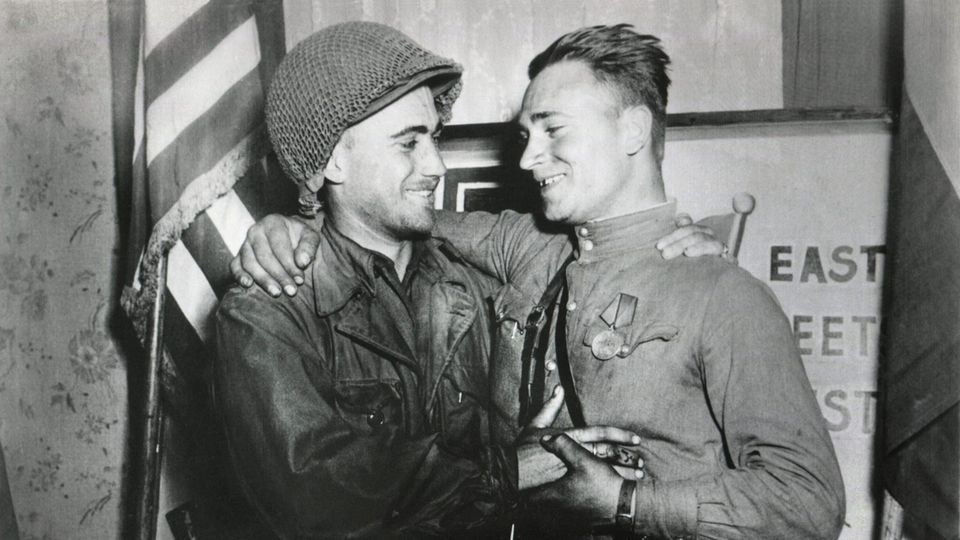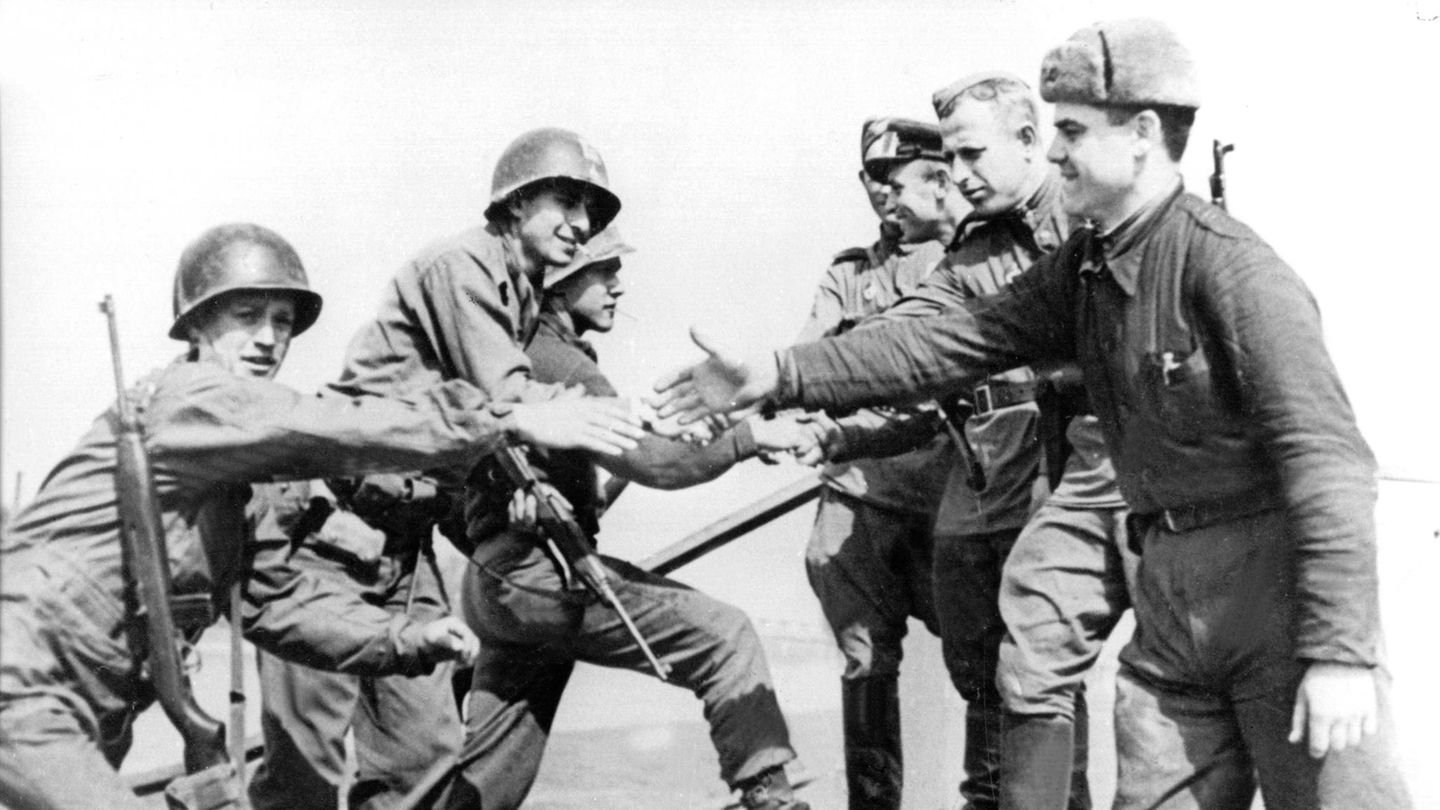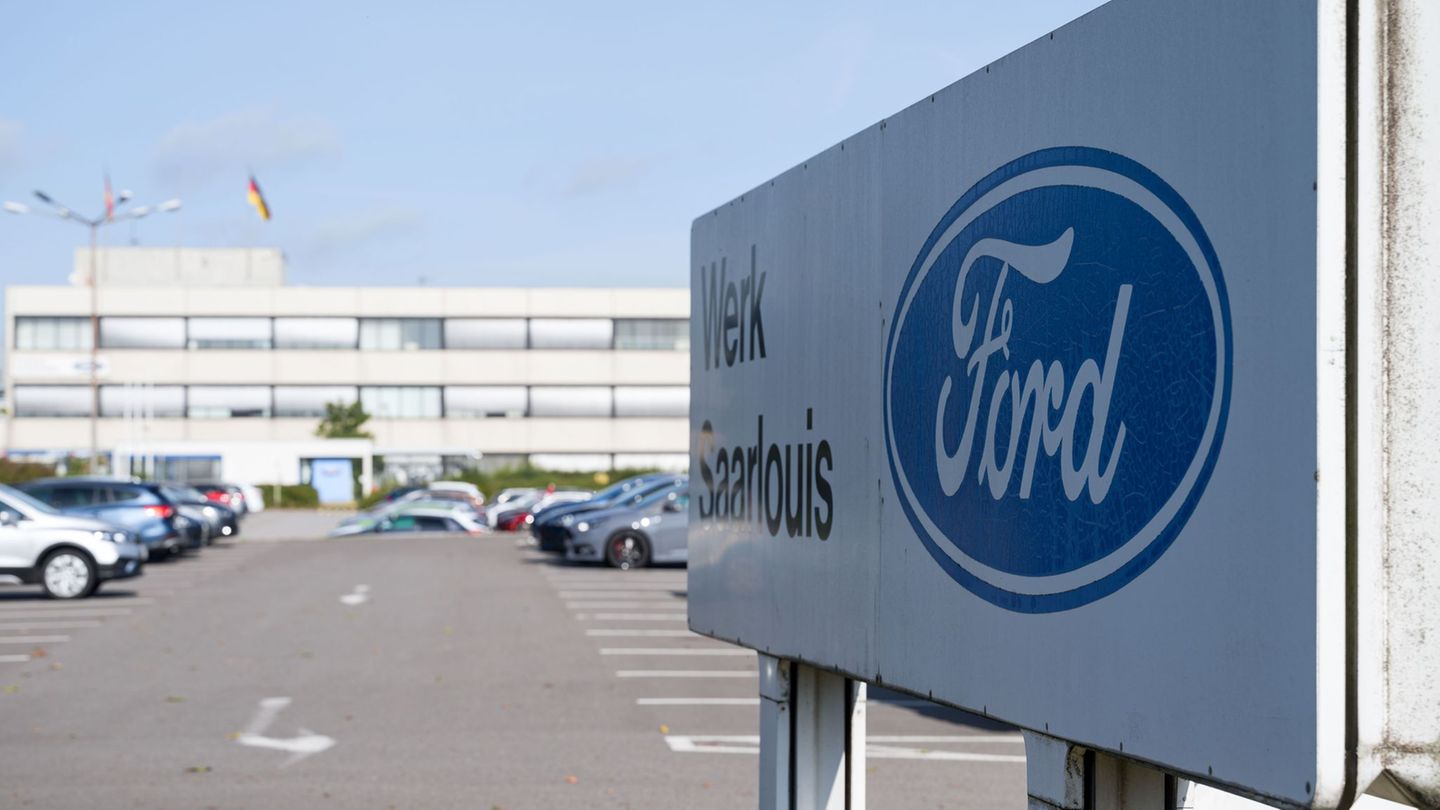US army meets Red Army
Mountains prevent the original photo of the first encounter on the Elbe
Copy the current link
Add to the memorial list
It is said to show the first encounter between the US Army and Red Army on the Elbe: the photo of soldiers in April 1945 in Torgau. But strictly speaking, it is a fake.
The famous picture of Torgau went around the world shortly before the end of the Second World War. On April 25, 1945, soldiers from the US Army and the Red Army met in the Saxon city on the Elbe and reached their hands over the gaping gap of a destroyed bridge.
However, the recording of the US press photographer Allan Jackson was only created a day later and does not show the original scene. The photo that went around the world is a re -enactment to adequately document the historical moment. The first encounter was in truth differently than shown – and in another place.
On the day that was supposed to go into history, a small squad from the US headquarters in Wurzen first set out to explore the narrow strip that was still between the US Army and Red Army. The Americans had stopped their soldiers on the Mulde, an adjoining arm of the Elbe. So it was agreed with the Soviets whose troops stopped on the Elbe. They wanted to avoid an uncontrolled encounter.
Under the leadership of lieutenant Albert Kotzebue, the exploration team drove to Strehla, which is 30 kilometers away from Torgau. There, Kotzebue put over the Elbe with several soldiers on a sailboat – and met a unit of Red Army, Lieutenant Colonel Alexander Gordeev.
They celebrated the victory and peace
The encounter went emotionally. Together, Americans and Soviets celebrated the victory over Nazi Germany, Souvenirs were exchanged: “We promised that the nations of the earth should and should live in peace,” said Joseph “Joe” Polowsky, the well-known US translator, who was supposed to work for peace all his life afterwards. Polowsky was the son of Jewish emigrants from Ukraine and spoke Russian.
The setting was not good for one picture. The meeting in Strehla took place in the middle of around 300 corpses. The children, women and old men had become the victim of an erroneous artillery shot of the Red Army.
First the Soviets shot at the Americans in Torgau
But there was a second exploration team that had opened up that day. Under the leadership of lieutenant William Robertson, he was supposed to observe the flow of refugees east of Leipzig. When Robertson received the information on the way that there were units of the Red Army near Torgau on the Elbe, he drove there.
The encounter there was more difficult. Initially, Soviet soldiers shot on the US flag that the Americans waved on the west side because they suspected a trap of Wehrmacht soldiers.

It was only when the misunderstanding was cleared that there was an encounter between the patrol of senior lieutenant Alexander Sylvashko and the exploration team under Robertson. To do this, the soldiers had climbed onto the destroyed bridge from both sides and had reached their hands over the bridges.
However, this scene was reproduced with other soldiers exactly a day later-and found their way into the world public.
Sources: “”, “”, Dpa
Source: Stern
I have been working in the news industry for over 6 years, first as a reporter and now as an editor. I have covered politics extensively, and my work has appeared in major newspapers and online news outlets around the world. In addition to my writing, I also contribute regularly to 24 Hours World.





